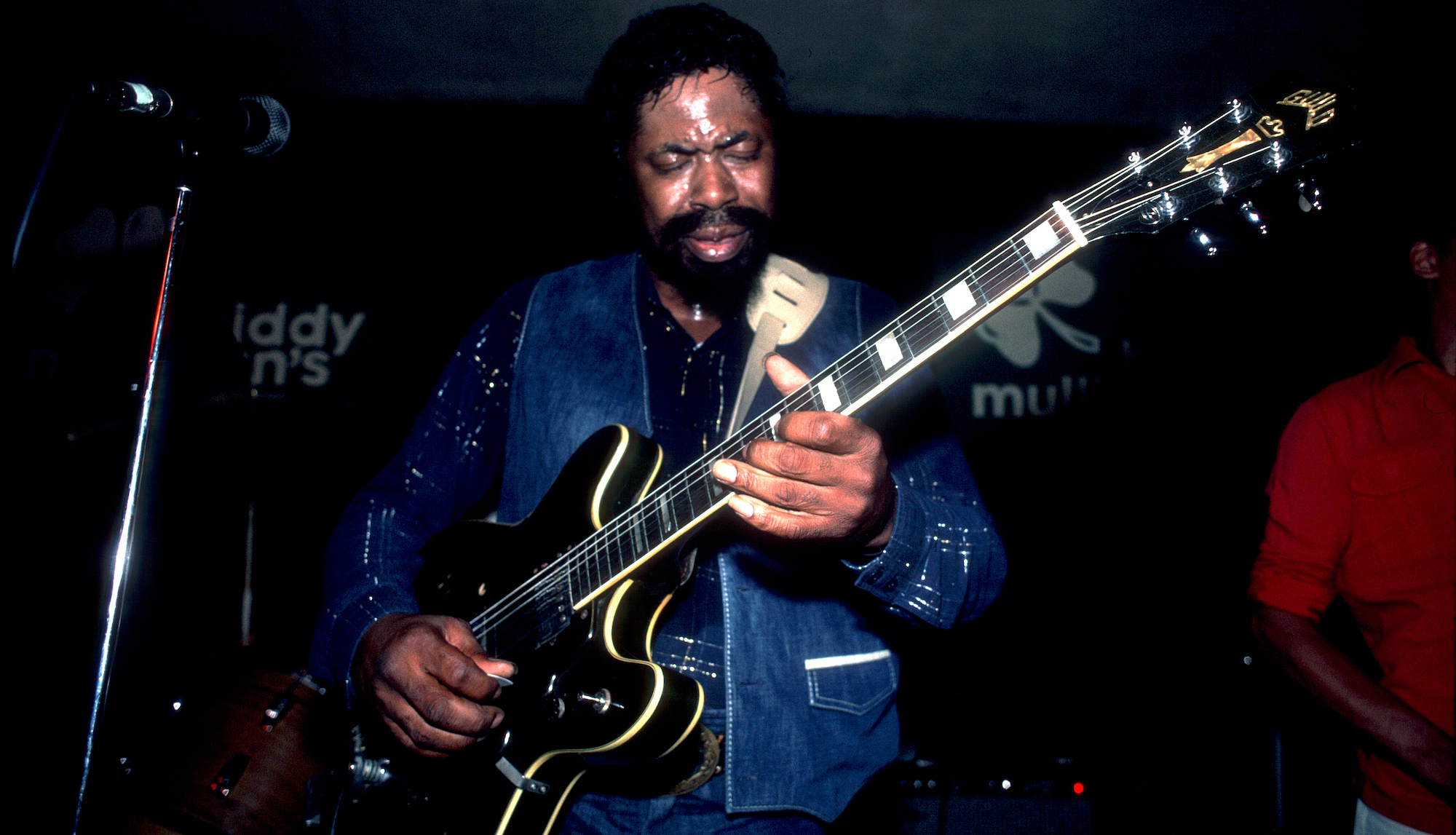“The guitar that I used on my first album cost me $20, and I got a good sound out of it. It's what you put into the guitar that counts”: He collaborated with Johnny Winter, and was covered by Phish. Son Seals is essential listening for any blues guitarist
A master of gritty, blue-collar blues, Seals was a Chicago guitar icon. Here, he discusses his beloved Guild Starfire, and why blues guitarists need to remember to keep things fun

After a seven-year break trom the studio, Son Seals – “Mr. Bad Axe” – has re-emerged with Living In The Danger Zone, his long-awaited sixth album for Alligator Records.
A master of gritty, blue-collar blues, Seals has hardly been idle. He's mainly stuck close to his hometown of Chicago, and his fiery guitar playing can often be heard at one of the city's better blues clubs. With a new album set for release, look for Seals to return to the national touring circuit.
Born 48 years ago in Osceola, Arkansas, Seals grew up listening to bluesmen like Albert and B.B. King, Muddy Waters, and Sonny Boy Williamson, all of whom regularly played his father's nightclub, the Dipsy Doodle.
Seals played briefly in Chicago in the early Sixties with slide master Earl Hooker, and spent most of the later part of the decade playing drums for Albert King. But guitar remained his first love, and it was his searing guitar playing heard at Chicago's Flamingo Club that impressed Alligator president Bruce Iglauer enough to release his debut, The Son Seals Blues Band, in 1973.
With Living In The Danger Zone, he's come full circle: back with Alligator and sounding better than ever.
It's been a long time since your last album, Bad Axe, in 1984. Do you think that long break slowed your career momentum?
“It's hard for me to say. If it has, I haven't felt it. I can only say that my phone never stopped ringing with offers for gigs. The day your phone stops ringing, that's when you know something's wrong.
All the latest guitar news, interviews, lessons, reviews, deals and more, direct to your inbox!
“What happened was that I got involved with real estate – I own three buildings – and that demanded a lot of my time and attention. I couldn't do that if I was halfway around the world. I had to cut back on those four- and five-week tours I was doing. But now that I've got things pretty much under control, I'll be out there a bit more.”
Your new album sounds like a logical continuation of what you've done in the past, with a good mixture of uptempo, funkified blues, shuffles, and minor key tunes.
“Blues music isn't all ‘crying in your beer’ music; it's also music you can dance to, raise hell with, and have some fun. You have to put a little of that into your playing as well. It can't all be down-home, back-alley stuff, even though that has its place, too. You have to mix it up to reach everybody out there.”
You've always used interesting turnarounds in your music, as well as some fairly sophisticated arrangements.
“I like playing arrangements. I like knowing what I'm going to hear night after night, instead of just going up there and jamming. Even when I sit in with somebody who's a good player, I still miss those arrangements that I know should be there.
“I like to play music that makes sense, and whether I've got a horn player with me or not, I tend to play that way.”

For many years your main axe was a Guild Starfire. But on the new album you used a blonde Gibson ES-335. Why the switch?
“There's nothing I'd like better than to play that Guild for the rest of my life. I loved that guitar from the minute I first picked it up. But the neck started to go bad a few years ago, and it needed new frets. I couldn't find anybody I trusted to work on it.
“As much as I hated to do it, I decided to go and get myself another guitar – something that I could at least be halfway pleased with. I ended up getting a new Gibson, as well as a new Fender Twin Reverb at the same time. With them I can get a sound that's pretty close to what I would get on my Guild.”
If I can find a good amp, the guitar doesn't have to be that good. The Norma guitar that I used on my first album cost me $20, and I still got a pretty good sound out of it
If you got it repaired, would you bring your Guild out of retirement?
“I don't know. That guitar is a keepsake. It's a pretty rare guitar and I've been told that it's valuable. I'd be scared now to take it out of the house or leave it at a club.”
Regardless of what guitar you're using, your style is so unique and identifiable that hearing just a couple of notes is enough for someone to identify your playing.
“I try to get my sound together no matter what I play. The amp has a lot to do with it too. If I can find a good amp, the guitar doesn't have to be that good.
“The Norma guitar that I used on my first album cost me $20, and I still got a pretty good sound out of it. But it's really what you put into the guitar that counts. And that's got to come from you through your hands.”
You played drums for Albert King in the late Sixties – the time of the first blues revival. How would you compare the climate for blues music then with what's happening at present?
“That's kind of like comparing a '65 Cadillac with a '91. The blues is doing okay, but it could be doing a lot better if it got the right kind of support.
“Millions of people around the country love this music, but it doesn't get the support in the right places. You don't turn on Johnny Carson every night and see a blues band, or tune in the biggest radio stations in the country and hear any blues. They're playing everything but blues. But in spite of that, the blues survives – because there's so many out there who love this music.”
- This interview with Son Seals first appeared in the April 1991 issue of Guitar World. Subscribe and save.
You must confirm your public display name before commenting
Please logout and then login again, you will then be prompted to enter your display name.

